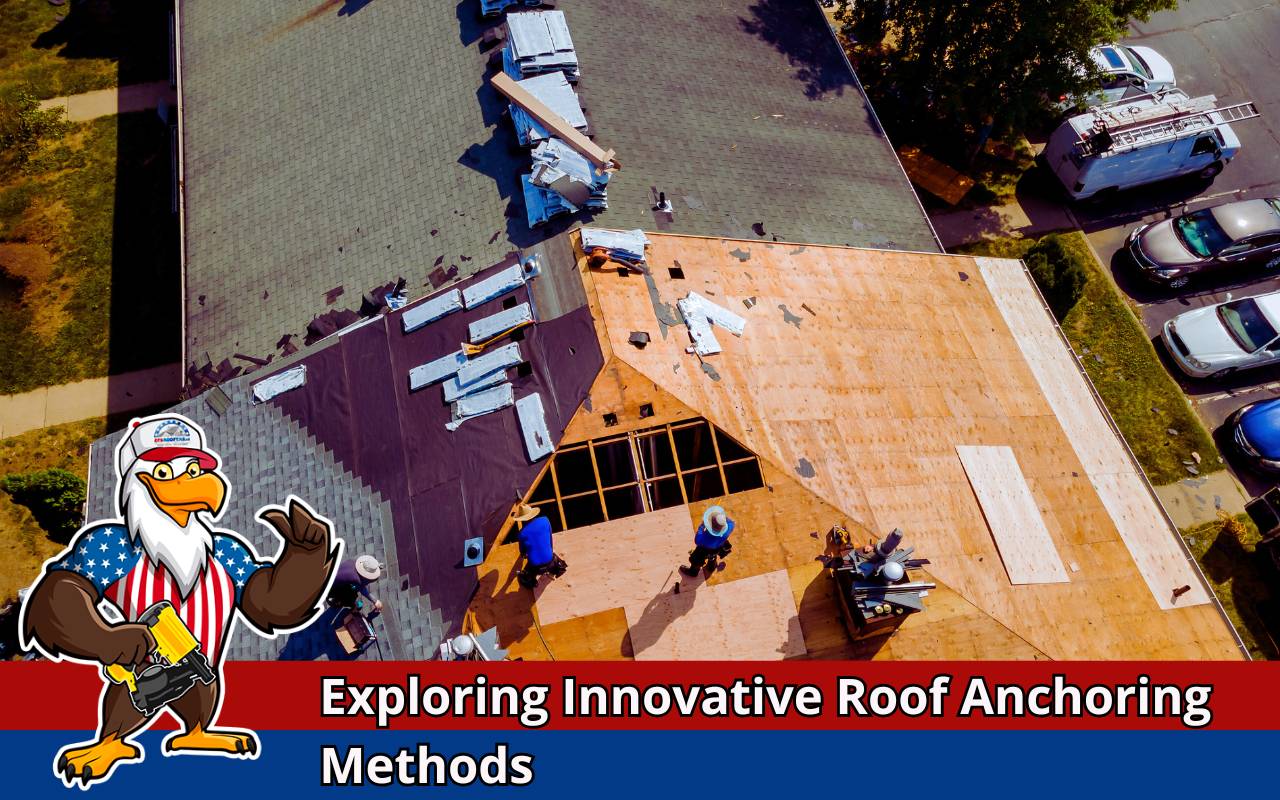
When ensuring structural safety, robust roof anchoring methods play a crucial role. Extreme weather demands innovation in securing roofs effectively. As climate patterns shift, traditional solutions may not withstand increasing forces. This need drives engineers and architects toward new approaches that prioritize resilience and safety.
Recent advancements highlight cutting-edge materials and smarter designs. These roof anchoring methods not only improve durability but also protect investments. By rethinking anchoring strategies, the construction industry ensures better resilience against unpredictable environmental conditions. Let’s explore how these methods reshape modern roofing.
Impact of Climate Change on Roof Anchoring
Climate change impacts roof anchoring methods significantly. Rising temperatures and intense storms increase the stress on structures. Strong winds exert uplift forces that exceed conventional systems’ limits, leading to dangerous failures. Coastal areas also face corrosion challenges due to salty air and moisture.
Temperature fluctuations further weaken anchors. Expansion and contraction cycles create repetitive stress on connectors and fasteners. Traditional methods lack the resilience to handle these challenges. To adapt, next-generation anchors must include corrosion resistance, elasticity, and real-time monitoring for safety and longevity.
Challenges of Traditional Roof Anchoring Methods
- Mechanical fasteners loosen over time due to vibration and thermal cycling.
- Steel anchors corrode in humid or coastal environments, compromising stability.
- Retrofits can damage insulation and create water intrusion points.
- Quality relies heavily on workmanship, often causing failures.
- Rigid designs struggle to adapt to green roofs or solar panels.
These issues highlight why innovative roof anchoring methods are crucial. Adaptability and durability must replace outdated systems to meet modern demands.
Introduction to Innovative Roof Anchoring Techniques
Innovative roof anchoring methods aim to adapt, distribute loads, and resist degradation. Hybrid anchors and adjustable tension systems improve resilience under extreme conditions. Modular plates allow faster installation across different roof types, reducing errors and labor requirements.
Such methods integrate advanced materials with smart monitoring. They establish reliable connections that maintain clamping force over time, even under stress.
Advanced Materials in Roof Anchoring
- High-performance polymers absorb impact energy and resist fatigue.
- Carbon fiber composites provide exceptional tensile strength.
- Stainless alloys resist corrosion in harsh environments.
- Lightweight anchors preserve aesthetic roofing designs.
- Eco-friendly materials contribute to sustainable construction practices.
These advanced options prove vital for modern roof anchoring methods. They increase safety while supporting sustainable construction goals.
Novel Designs for Enhanced Load Distribution
New designs distribute forces across wider areas, reducing stress points. Multi-point systems and load-spreading plates prevent localized failures. Even if one anchor weakens, surrounding connections compensate effectively. This redundancy ensures stability under storm conditions or seismic activity.
Technological Innovations in Roof Anchoring
Technology now transforms roof anchoring methods. IoT sensors track anchor tension, corrosion, and temperature in real time. Wireless alerts prevent minor issues from escalating. Drones and AI analysis predict risks early, enhancing preventive maintenance strategies.
These smart technologies optimize building safety and reduce costs. Facility managers gain valuable insights for long-term planning.
Benefits of Adopting Innovative Roof Anchoring Methods
- Greater resilience against extreme weather reduces maintenance needs.
- Pre-assembled modules simplify installation and cut labor costs.
- Monitoring systems optimize maintenance schedules efficiently.
- Advanced designs extend the service life of roofing structures.
- Eco-friendly anchors align with green building certifications.
With these benefits, adopting innovative roof anchoring methods becomes essential for modern construction.
Case Studies: Success Stories in Implementation
One coastal complex upgraded its roof anchors with carbon fiber plates. Tests showed 35% less deflection under uplift forces. During a storm, the structure remained intact without emergency repairs. Another example: a high-rise in a seismic zone used hybrid anchors. Integrated sensors confirmed safety during an earthquake, proving real-world resilience.
FAQs About Roof Anchoring Methods
What are roof anchoring methods?
They are systems designed to secure roofing structures against wind, seismic activity, and other environmental stresses.
Why are innovative methods necessary today?
Traditional solutions cannot handle modern climate challenges. Innovative roof anchoring methods provide adaptability, durability, and monitoring benefits.
How do advanced materials improve performance?
Materials like carbon fiber and polymers enhance strength, resist corrosion, and reduce long-term maintenance requirements.
Can innovative methods be used for retrofits?
Yes, many are adaptable for existing structures. They improve safety while minimizing damage during installation.
Where can I learn more about roofing services?
You can explore our roofing services or contact our team through the contact page.
Future Trends in Roof Anchoring Technologies
Future innovations include additive manufacturing for custom anchors and nanomaterial coatings for corrosion resistance. AI modeling will allow predictive testing before installation. Bio-based polymers will further enhance sustainability. These trends promise more efficient, eco-friendly roof anchoring methods.
Embracing Innovation for Safer and More Resilient Structures
Adopting advanced roof anchoring methods ensures long-term safety and sustainability. By embracing modern materials and smart technologies, construction adapts to climate demands. Explore more about roofing solutions or reach out through our contact page to protect your structures with innovation.
